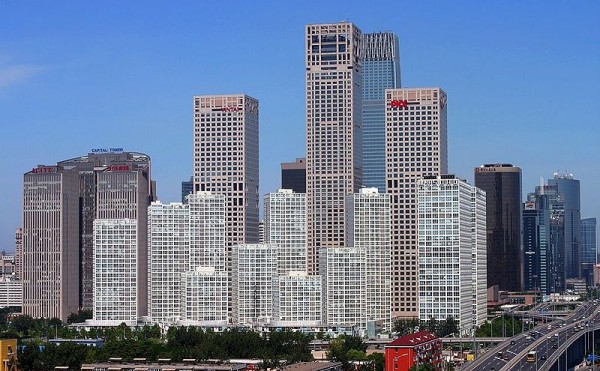Beijing Plans to Cut Coal Consumption by 50 Percent
| Jam Santos | | Sep 06, 2013 02:28 PM EDT |

(Photo : Beijing central business district)
The clean-air project issued on Monday aims to reduce and limit the amount of coal consumption used in the city's energy mix to less than 10 percent. Emissions coming from the coals are a huge contributor to Beijing's pollution, particularly smog, with highest rates during the winter time.
Like Us on Facebook
The plan is to cut the rate of fine particle matter to only 60 micro grams for every cubic meter by the year 2017. This would mean a total of 25 percent decrease from levels that were traced in 2012. The project also targets to lessen the city's total coal consumption by 13 million metric tons for the next five years.
The local government of Beijing has already been taking measure to cut coal consumption for the past 14 years. Based on data from the China Environmental News, an agency managed by the Environmental Protection Ministry, the city will cut seven million tons from its coal consumption within the project's time frame.
During the project launch on Monday, there was a laundry list of suggestions on how to cut coal consumption. Among the suggestions include placing a quota of coal to districts, making sure that Beijing's electricity and gas supplies are always available, and changing the concentration of sulfur on standard coal.
The government also predicts that decreasing the consumption of coal will help increase the demand for natural gases to up to 24 billion cubic meters by 2017.
Zhou Dadi, China's Energy Research Society vice-chairman mentioned that the supply in natural gases inside and outside of China is becoming more promising due to natural gas sources have been discovered recently.
By 2014, four gas powered electric plants will start operation in Beijing, and is expected to cut the total coal consumption by around 9.2 million tons.
Another solution the local city is looking into is using high quality coal, which has lower sulfur content, instead of low quality coal used in the rural and suburban area s before the heating season of 2016.
©2015 Chinatopix All rights reserved. Do not reproduce without permission
EDITOR'S PICKS
-

Did the Trump administration just announce plans for a trade war with ‘hostile’ China and Russia?
-

US Senate passes Taiwan travel bill slammed by China
-

As Yan Sihong’s family grieves, here are other Chinese students who went missing abroad. Some have never been found
-

Beijing blasts Western critics who ‘smear China’ with the term sharp power
-

China Envoy Seeks to Defuse Tensions With U.S. as a Trade War Brews
-

Singapore's Deputy PM Provides Bitcoin Vote of Confidence Amid China's Blanket Bans
-

China warns investors over risks in overseas virtual currency trading
-

Chinese government most trustworthy: survey
-

Kashima Antlers On Course For Back-To-Back Titles
MOST POPULAR
LATEST NEWS
Zhou Yongkang: China's Former Security Chief Sentenced to Life in Prison

China's former Chief of the Ministry of Public Security, Zhou Yongkang, has been given a life sentence after he was found guilty of abusing his office, bribery and deliberately ... Full Article
TRENDING STORY

China Pork Prices Expected to Stabilize As The Supplies Recover

Elephone P9000 Smartphone is now on Sale on Amazon India

There's a Big Chance Cliffhangers Won't Still Be Resolved When Grey's Anatomy Season 13 Returns

Supreme Court Ruled on Samsung vs Apple Dispute for Patent Infringement

Microsoft Surface Pro 5 Rumors and Release Date: What is the Latest?









